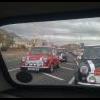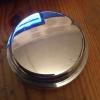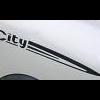
Warped Head
#1

Posted 19 July 2009 - 11:05 AM
of piston 4 melting. so is there a good chance the head is warped?
thanks
#2

Posted 19 July 2009 - 11:10 AM
ash
#3

Posted 19 July 2009 - 11:11 AM
thanks
#4

Posted 19 July 2009 - 12:50 PM
#5

Posted 19 July 2009 - 12:51 PM
not generally an issue with cast iron heads
I would guess that you have had the block skimmed recently or refitted the head with a higher torque figure which has pulled the top thread out of the block thus stopping the head from sitting correctly
Or perhaps not torqued up evenly?
#6

Posted 20 July 2009 - 08:42 AM
#7

Posted 20 July 2009 - 01:25 PM
it's definitely possible to warp cast iron heads and I have seen it firsthand.absolutely
If a piston melted, that engine got super hot. Heads can warp without melting pistons.
don't rule out the overheat as being the cause if the head turns out to be warped.
You shouldn't have pulled the threads up from the block deck UNLESS:
1) you SEVERELY over-torqued the nuts/studs
2) the block had been skimmed severely leaving it less resistant to the threads pulling.
Keep in mind that if the head is severely warped, skimming it until it's flat may result in chambers that
are of widely different volumes. Depending upon how much they vary, some corrective actions
may be required(as in opening out the smallest to match the largest)
#8

Posted 20 July 2009 - 07:36 PM
#9

Posted 20 July 2009 - 07:51 PM
i took the head off today and it appears to be slightly warped in between cylinders 2-3, as it keeps blowing between the two.
its going morspeed tomoz to be skimmed so hopefully the issue shall be solved
#10

Posted 20 July 2009 - 08:00 PM
Edited by Spenner, 20 July 2009 - 08:01 PM.
#11

Posted 20 July 2009 - 10:07 PM
#12

Posted 21 July 2009 - 11:08 AM
the narrow strip of metal between cylinders 2&3 is a common problem area.the block has never been touched and is in mint condition,
i took the head off today and it appears to be slightly warped in between cylinders 2-3, as it keeps blowing between the two.
its going morspeed tomoz to be skimmed so hopefully the issue shall be solved
In addition to making sure the head and block surfaces are absolutely flat in this area, you need to make sure
that you are using a good quality head gasket and torquing it properly. If the head nuts are not
torqued correctly, you can cause the metal fire rings that surround each cylinder to flatten and
break up. Make damned sure that you use the right torque figures for the lubricant used on the nut/stud threads.
If you haven't already done so, you should read this article: http://www.minimania...27/ArticleV.cfm
#13

Posted 21 July 2009 - 07:33 PM
and reseated the valves.
it shall be fitted tomoz and il compression test it straight away.
#14

Posted 22 July 2009 - 08:43 PM
haven't compression tested yet. quite scared to do so
#15

Posted 23 July 2009 - 06:54 AM
with sealing between the head and block.
However, as a warning to you and others, if your car ever starts to misfire badly and you suspect head gasket problems, especially between
cylinders, do NOT continue to drive the car with it running this way. I have seen several heads and blocks where the METAL surfaces of the head
and block were BURNED AWAY. I know this sounds crazy, but I have seen it on several different engines. In each case, a small "ditch" was formed
and the metal was burned down to a depth of approx. 1/16 of an inch. This takes a serious skim to clean it up and if either the block or head
is already severely skimmed, it may not be an option to do a skim of the required depth to restore the usefulness of these parts.
It's amazing just how powerful the "burn power" is when you get firing between cylinders across the narrow area of metal between adjoining cylinders.
All that has to happen is for the head gasket to get burned through in this area and it opens up quite a "tunnel" through which flames can roar back
and forth between the cylinders as each cylinder takes its turn firing. Next thing you know, these super hot flames start removing metal in a hurry.
This is a classic meltdown cycle in which the damage is done quicker and quicker as the size of the inter-cylinder tunnel grows.
Best to be safe rather than sorry. Pull over and get your car towed to a place where you can work on it.
1 user(s) are reading this topic
0 members, 1 guests, 0 anonymous users


















